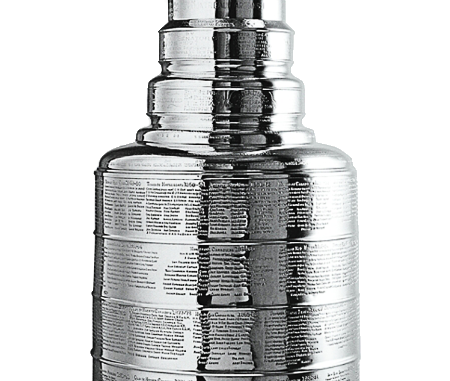
Today, the Minister of Environment and Climate Change and Minister responsible for Parks Canada, Catherine McKenna, announced the designation of the Stanley Cup as a national historic event with the unveiling of a Historic Sites and Monuments Board of Canada (HSMBC) plaque.
The Stanley Cup is the oldest and most prestigious trophy in North American team sports and is considered a symbol of professional hockey supremacy. This highly coveted silver trophy has created numerous rivalries and led to countless exciting matches, serving up spectacular plays and showcasing the talents of the league’s star players. The cup’s great symbolic value has captured the collective imagination of hockey players and fans across North America for 125 years.
The Government of Canada is committed to connecting Canadians to the significant events that contributed to our country’s rich history and heritage. Initially known as the Dominion Hockey Challenge Cup, the Stanley Cup was donated by the Governor General of Canada, Lord Stanley of Preston, in 1892 as a prize for the winning amateur hockey team at the Dominion of Canada championship. As of 1927, it became the exclusive prize of the National Hockey League’s playoff champion.
Canada’s national parks, national historic sites and national marine conservation areas enable Canadians to experience their rich history and heritage in a special way and play a big part in the celebration of Canada 150. As part of the centennial of national historic sites, Parks Canada invites Canadians to be inspired and captivated by the stories of the people and events that shaped the Canada of today.
Quotes
“The Stanley Cup conveys many memorable moments in Canada’s hockey history. I am delighted that this symbol of hockey excellence, celebrating the National Hockey League’s greatest teams, players and rivalries, is now recognized as an event of national historic significance. This designation reflects the rich heritage of our nation and provides an opportunity for Canadians to learn more about our diverse history.”
The Honourable Catherine McKenna,
Minister of Environment and Climate Change and Minister responsible for Parks Canada
“The incomparable and pre-eminent Stanley Cup perfectly symbolizes the ultimate in success for our exceptional sport. Passed from player to player, from generation to generation, from community to community around the world, the Stanley Cup may well be the greatest gift in the history of sports. The National Hockey League truly is honored that Lord Stanley’s donation of our cherished championship trophy has received recognition as a national historic event during our Centennial celebration and the joyful observance of Canada’s sesquicentennial.”
Gary Bettman,
Commissioner, National Hockey League
Quick Facts
- Made of a silver-and-nickel alloy, the Stanley Cup stands 88 cm (34.6 inches) high and weighs nearly 15.9 kg (35 pounds).
- Since 1924, the names of the players, coaches and managers of every Stanley Cup-winning team have been engraved on its base. The trophy is topped with a copy of the original bowl, which is on permanent display at the Hockey Hall of Fame in Toronto.
- Since it came into existence, the Stanley Cup has been awarded every year with the exception of the 1918–1919 season, because of the Spanish flu epidemic, and the 2004–2005 season, when a work stoppage led to the cancellation of the entire regular season and playoffs.
- Created in 1919, the Historic Sites and Monuments Board of Canada advises the Minister of Environment and Climate Change regarding the national historic significance of places, people and events that have marked Canada’s history.




Leave a Reply